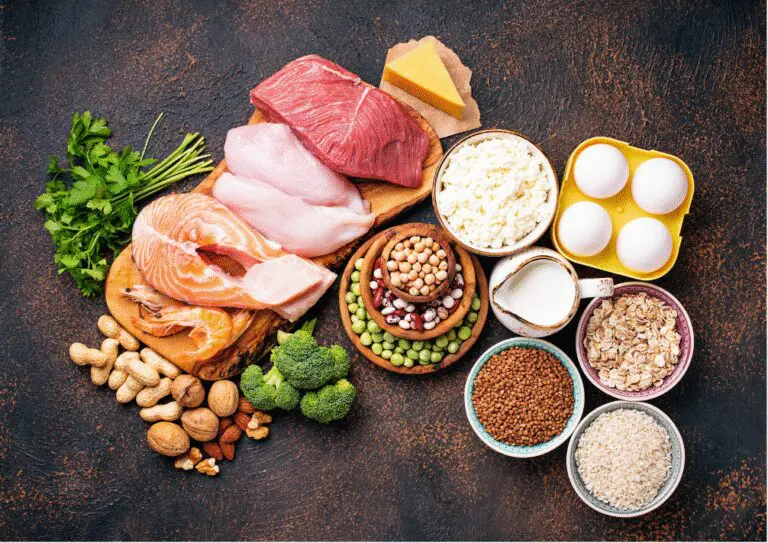Key Points:
– Prebiotic is “a substrate that is selectively utilized by host micro-organisms conferring a health benefit”.
– Studies have shown that about 60 tons of food pass through the gut of a human throughout the entire lifespan, contributing to the gut microbiota.
– Prebiotics increase the growth of beneficial bacteria in the gut and support overall gut health.
– There are different types of prebiotics, including resistant starch, fructans, and various types of oligosaccharides.
Experts tell us that the intestinal bacteria of a child is derived from the mother. In other words, they are passed down from the mother to her offspring while still a fetus. These micro-organisms have since then been a part of the body. Also, from the food we eat. Studies have shown that about 60 tons of food pass through the gut of a human throughout the entire lifespan, contributing to the gut microbiota. Contrary to popular belief, not all microorganisms are harmful to the body. There are the good ones and the bad. This article contains an overview of what prebiotics are and how they influence these microorganisms in our digestive system.
Read on to learn more about the term ‘prebiotics’ and find out what are the types of foods that contain a healthy amount of it.
What Are Prebiotics?
According to experts, prebiotic is “a substrate that is selectively utilized by host micro-organisms conferring a health benefit”. The host micro-organisms here are the beneficial bacteria in the intestine that are associated with our bodily functions and health benefits. In simpler words, prebiotics is food material (a subgroup of dietary fibers that cannot be digested by humans) used by probiotics for survival and growth.
For a substance to be termed prebiotic, it must be:
• Resistive to gastric juice, enzyme hydrolysis, and absorption by the intestines
• Broken down by intestinal microbiota
• Utilized selectively by the beneficial bacteria to confer health benefits
They are introduced as a dietary means of modulating the intestinal microbiota to the favorable community.
Effects Of Prebiotics On Gut Microbiota
The gut microbiota interacts with the host’s cells throughout their lives. The metabolism and composition of these micro-organisms are a result of the host genetics and other factors, such as stress, diet, medications, and lifestyle [1].
Studies have proven that prebiotics have the potential to increase the population of beneficial bacteria while reducing the growth and effect of harmful ones. Overall, they improve the host microbiota by influencing its composition and quantity.
Importance Of Prebiotics
Prebiotics increase the growth of beneficial bacteria in the gut [1]. They support the overall health of the digestive system. They also enhance the immune system and help maintain a healthy metabolic activity.
Prebiotics have also been associated with improving the outcomes of certain abdominal and intestinal disease since they bring about the growth of healthy bacteria. As the gut microbiota is implicated in many health conditions as discussed in the earlier articles, a healthier gut microbiota will hence result in a healthier body.
Types Of Prebiotics
Resistant starches
Resistant starches include resistant maltodextrin, which is a non-viscous dietary prebiotic fiber. It is resistant to enzyme and acid hydrolysis which enables it to reach the colon where most of the gut microbiota is located. It is slowly fermented and hence does not cause as much bloating [2].
Fructans
They consist of inulin and fructo-oligosaccharide. They can selectively and actively stimulate the growth of lactic acid bacteria mainly [2].
Galacto-oligosaccharide
Galacto-oligosaccharides are made from lactose extension. They can greatly stimulate the growth of Bifidobacteria and Lactobacilli [2].
Other oligosaccharide
Some oligosaccharides are made from a polysaccharide known as pectin [2].
Sources Of Prebiotics
Prebiotics are found in high-fiber foods from our diet. They can be found in the following:
Chicory root
An average chicory root contains about 1g of prebiotic fiber. It nourishes the gut bacteria and at the same time, supports healthy digestion. Moreover, there are many other health benefits that chicory root confer.
Dandelion greens
Dandelion greens also contain prebiotic fiber. 100g of dandelion green has about 4g of prebiotic fiber. They have also been known to be a good source of antioxidants and vitamins. Dandelion greens have also been associated with a healthy liver, good cholesterol levels and many more.
Jerusalem Artichoke
Like dandelion greens and chicory root, Jerusalem artichoke also contains high amount of prebiotic fiber. 100g of it contains approximately 2g of prebiotic fiber, which is about 7% of the daily recommended amount of fiber in a 2,000 calorie diet. It is also commonly known as sunroot, sunchoke or wild sunflower.
Garlic and onions
Garlic and onions are composed of prebiotic fibers as well. 1 clove of garlic has about 7% of prebiotic fiber while an onion is made up of about 2% of prebiotic fiber. They can be easily incorporated in the diet especially in pastas, pizzas and meat dishes.
Bananas
Bananas contain an amazingly high amount of prebiotic fiber known as resistant starch, as much as 70% of its dry weight when it is unripe. Resistant starch is a prebiotic fiber that is able to withstand digestion in the stomach, to reach the intestine where most of the gut microbiota is located. It passes through the gastrointestinal tract without much change. The gut microbiota then ferments the resistant starch to bring about many health benefits.
Barley
Barley is not only used in the production of beer and beverages, but also as a source of prebiotic fiber. It is also packed with many essential vitamins and minerals.
Oats
Oats are another source of prebiotic fiber. They are rich in beta-glucan fiber. They are a good alternative to processed food such as white bread for your breakfast. To incorporate oats into your diet, simply add it to slices of fruits such as bananas or take it with warm milk.
Apples
As they say, an apple a day keeps the doctor away. Unsurprisingly, apples contain prebiotic fiber as well. Most of the prebiotic fiber in apples is pectin, which is fermented by the gut microbiota to produce short-chain fatty acids which plays a role in our bodily functions.
Bottom Line
It is important to include prebiotic fiber in your diet. There are several health benefits associated with eating food rich in prebiotic fiber asides from increasing the gut microbiota. Moreover, they are found in a wide variety of food and can be easily added to your diet.
Related Articles

Prebiotic: Gut Microbiota, Gut Health, and Beyond
References
- Holscher HD. Dietary fiber and prebiotics and the gastrointestinal microbiota. Gut Microbes. 2017;8(2):172-184.
- Davani-Davari D, Negahdaripour M, Karimzadeh I, et al. Prebiotics: Definition, Types, Sources, Mechanisms, and Clinical Applications. Foods. 2019;8(3):92.





